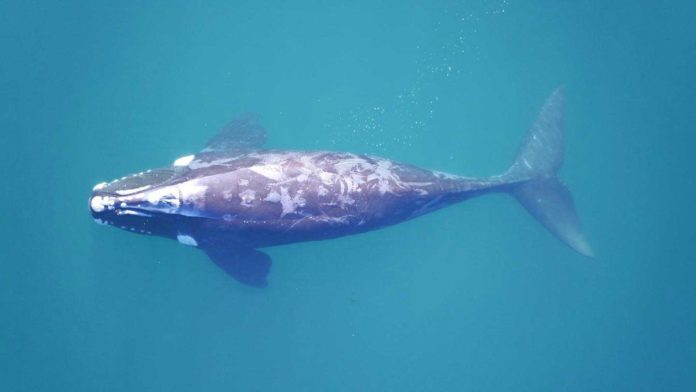Scientists at the Aarhus Institute of Advanced Studies (AIAS) in Denmark and Woods Hole Oceanographic Institution (WHOI) U.S. have devised a new way to measure the weight of free-living whales. They used only aerial images taken by drones.
Scientists measured the body length, width, and height of free-living southern right whales photographed by drones. They then developed a model that accurately calculated the body volume and mass of the whales. Because of their large size and aquatic life, previously the only way to obtain data on the body mass of whales was to weigh dead or stranded individuals.
To ascertain the body volume and mass of southern right whales the specialists initially took aerial photographs of 86 individuals off the coast of Península Valdés, Argentina. The clear waters and a large number of whales that gather there every winter for breeding made it an ideal place to collect high-quality images of both the dorsal and lateral sides of the whales. From there, they were able to obtain length, width, and height measurements.
Fredrik Christiansen, an assistant professor at AIAS, said, “Knowing the body mass of free-living whales opens up new avenues of research. We will now be able to look at the growth of known aged individuals to calculate their body mass increase over time and the energy requirements for growth. We will also be able to look at the daily energy requirements of whales and calculate how much prey they need to consume.”
Michael Moore, a biologist at WHOI and a co-author of the paper, said, “Weight measurements of live whales at sea can inform how chronic stressors affect their survival and ability to produce offspring.”
The newly developed model enabled scientists to create a 3D mesh of the whale. For this, they collaborated with the Digital Life Project at the University of Massachusetts at Amherst in the USA. They also created the full-color 3D model of the right whale by working with CG artist Robert Gutierrez.
Scientists suggest that both models can be used for scientific purposes, such as studying movement, as well as for educational uses.
The model can also be used to estimate the size of other marine mammals.
Christiansen says, “The difficulty in measuring body mass reliably in free-living whales, has prevented the inclusion of body mass in many studies in ecology, physiology, and bioenergetics. This novel approach will now make it possible to finally include this central variable into future studies of free-living whales.”
The innovative method, published in the British Ecological Journal Methods in Ecology and Evolution.
